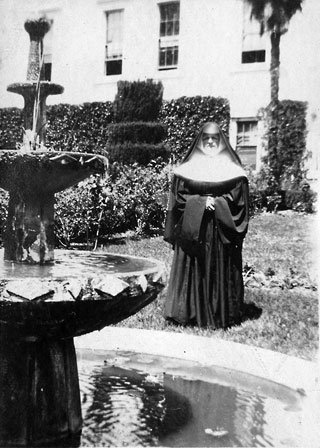One of the great undiscovered treasures in the Gold Country.
National Historic Importance of Mount Saint Mary’s Convent and Orphanage
The buildings of Mount St. Mary’s Convent and Orphanage are of national, state, and local importance. The buildings illustrate a 100-year history from the 1860’s to the 1960’s and can provide insight into women’s changing roles and the lives of children and families in crisis.
The building you’re standing in illustrates the lives and work of women whose contributions changed education, health care, and social services across the nation. While many of the institutions these women created survive, buildings like this one rarely do.
From 1860 to 1960 there was a rapid growth of Catholic communities, such as the Sisters of Mercy who started Mount St. Mary’s. Staffed largely by foreign-born women, these communities grew from 5000 in 1860 to over 180,000 by 1965. As early as in 1900, Catholic Sisters had built over 500 hospitals, 3800 parish schools and 600 girls academies; most aimed at serving poor and unwanted populations. In early 1900, Sisters of Mercy partnered with United Railway of Saint Louis, MO to start the nation's first prepaid medical plan.
State Historic Importance of Mount Saint Mary’s Convent and Orphanage
This building is the earliest convent for women still standing in California and the only example with 19th-century sisters’ rooms intact. It is the oldest orphanage building west of the Rocky Mountains, one of the first orphanages in California and the first in the Sierras.
In 1849 gold fever changed the West forever. The early clergy of many denominations were hopeful gold seekers who later remembered their calling and started holding services. Simple shacks, tents and the open-air meetings soon gave way as Victorian churches sprang up in every gold rush town.
At this time San Francisco was a vast new Archdiocese under Archbishop Alemany. Determined to establish the Church in the West he brought in the Seven Sisters of Mercy, who came to San Francisco in 1854. Women’s religious communities were soon running and building orphanages, hospitals, and schools. While these institutions are still serving people, their early buildings are almost entirely gone.
The building standing in Grass Valley is one rare exception. You can see the building's history in the columns made from repurposed ship masts, the pressed tin lining the Sister’s Chapel, and the walled garden that is the oldest garden in Nevada County.
Local Historical Importance of Mount Saint Mary’s Convent and Orphanage
In August of 1863, Katherine Russell, better known as Mother Baptist, arrived in Grass Valley with four other Sisters of Mercy to help orphaned children. Three years later Mount Saint Mary’s began providing full-time care for orphans and other children.
Today this is the only part of the early parish buildings are still standing. These include the only remaining 19th century school rooms in Grass Valley and the chapel which is the second oldest church in town. For the descendants of the many children who lived here, this is the only public building relating to their ancestors still standing.
The building is a rare example of a type once found across the United States (1860 to 1960). Catholic sisters at this time lived, worked and prayed in the same building. Architecturally the buildings were utilitarian in style. Ideally the compound would offer an outdoor space for reflection. The convent in Grass Valley today is the only surviving example of a 19th century compound in California and the oldest west of the Rocky Mountains.






